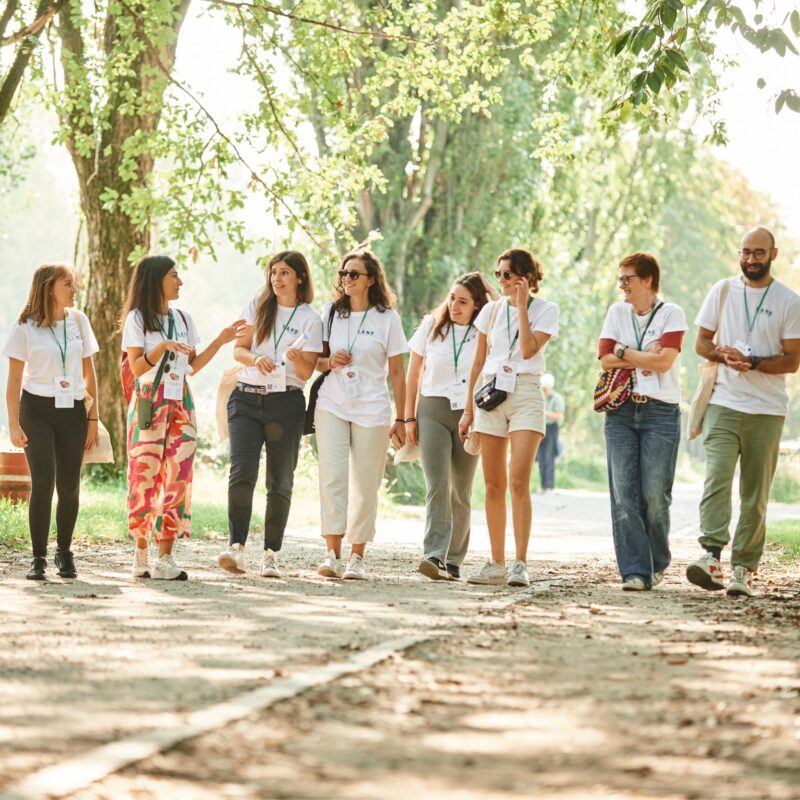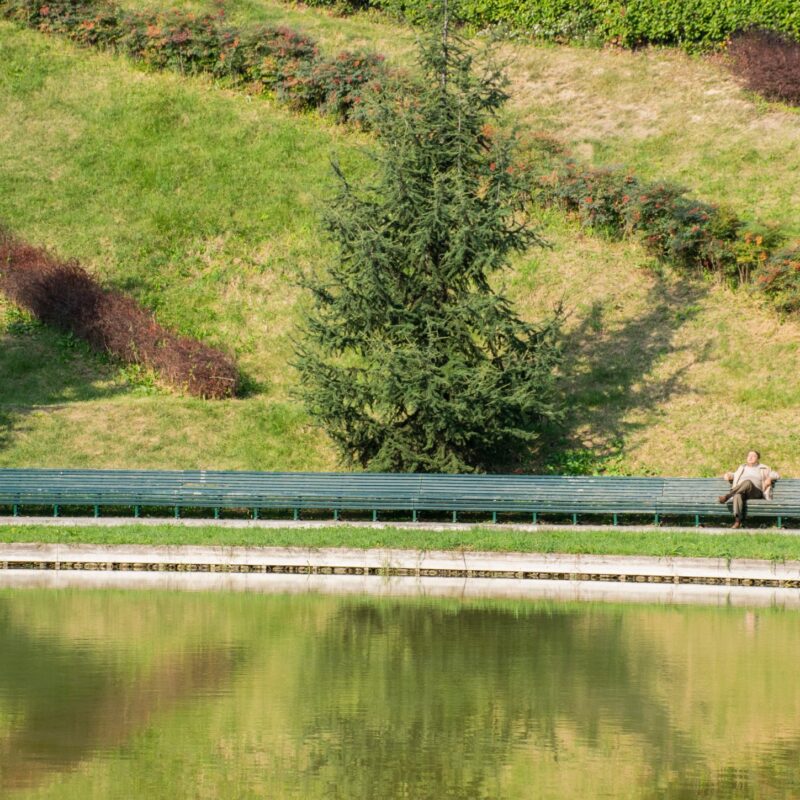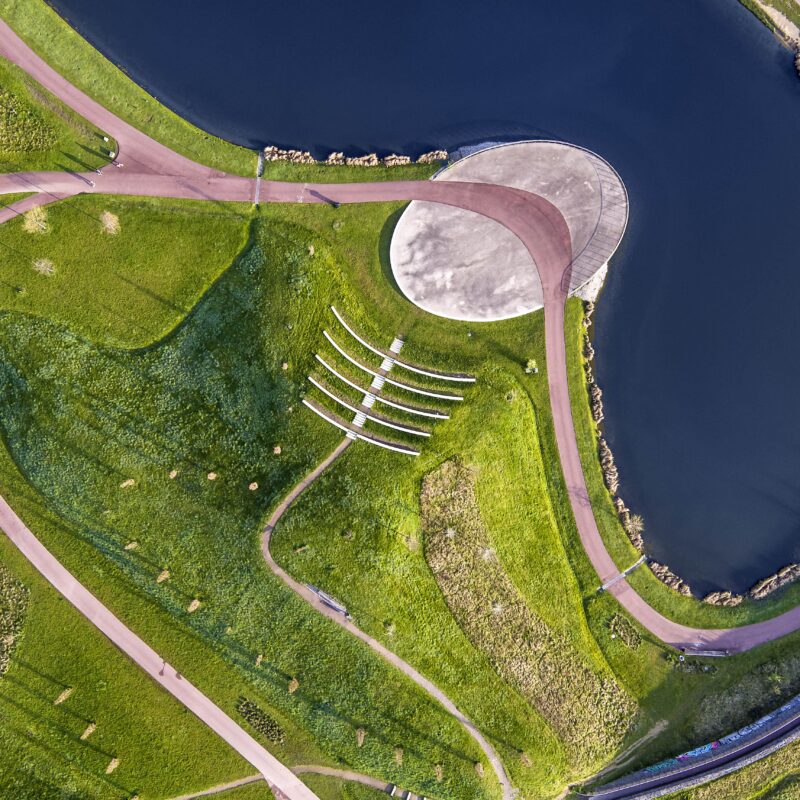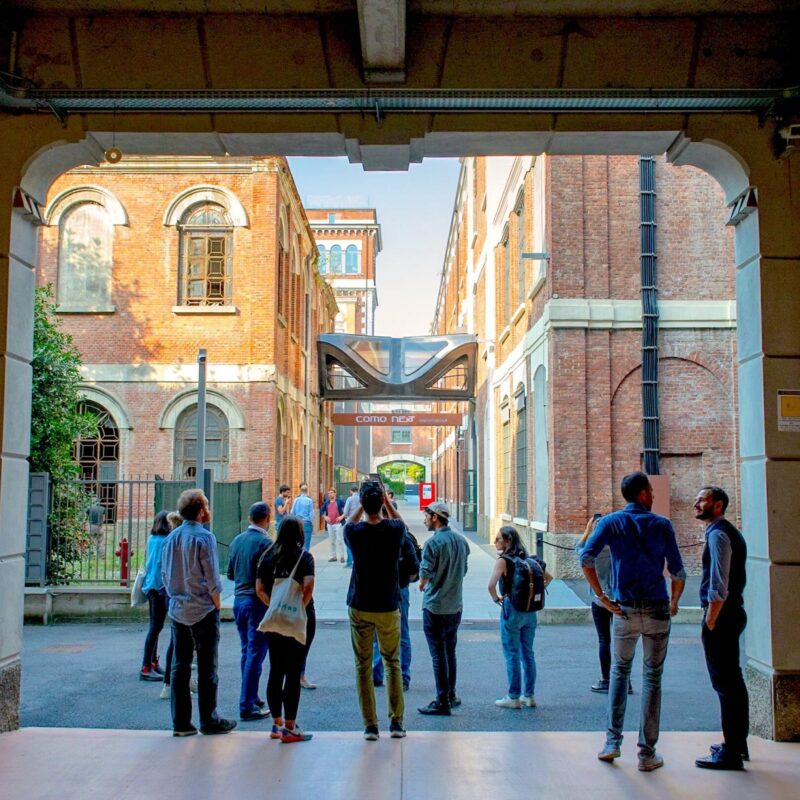
Across Borders Looking Back Helps
A conversation with landscape architect and city planner Andrea Gebhard, President of the German Federal Chamber of Architects

Andrea Gebhard, President of the German Federal Chamber of Architects
When congratulated on her election as President of the German Federal Chamber of Architects, Andrea Gebhard puts things into perspective. Her predecessor was also a woman, and a landscape architect had already headed the professional organization. Moreover, she says she’s also an urban planner, and from 2007 to 2014 she served as president of the Association of German Landscape Architects (BDLA). At the time, however, she was in fact the first woman to head the professional association since its founding in 1913.
She puts the current trend toward greener cities into a similar perspective. She’s obviously quite happy about this and about the new focus on landscape architecture that comes with it. But Andrea Gebhard explains just as matter-of-factly that landscape architecture has always been a foundation for urban development. “Landscape architecture is a foundation of urban planning and is closely tied to it.”
Before Andrea Gebhard founded the gebhard-konzepte studio in 2006, which became mahl-gebhard·konzepte in 2009, she had worked with the Munich planning unit since 1984, heading the green planning department there from 1993 to 2000. She notes Munich has had an open space design statute since 1996. At the time, the purpose of the statute was “to ensure and promote appropriate greening and design of building sites and children’s playgrounds.”And it’s been a real success for the design of open spaces. But the history goes back much further. She knows that in past centuries Munich was full of gardens, and she mentions the year 1812, when Maximilian I Joseph commissioned garden designer Friedrich Ludwig von Sckell and architect and master builder Carl von Fischer to plan the expansion of Munich. The city is still shaped by this groundbreaking planning, and the layout of Munich’s English Garden can also be traced back to Friedrich Ludwig von Sckell. Andrea Gebhard, who also received the Munich Architecture Award this year, is delighted about the increased focus on green cities: “Climate change has brought green issues to the forefront as never before. Awareness of this has increased enormously.”
Landscape must become the law
Awareness is one thing, action is another. What does she see as the obvious consequences? Here she mentions the important landscape architect Walter Rossow, who back in 1965 amazingly demanded that “The landscape must become the law.” She still feels committed to the principle voiced by this pioneer of landscape and environmental planning decades before there was general awareness of climate and urban development issues.
Right now there are various connections between the city and the countryside. Great numbers of people move back and forth between them. Initially, it was mainly younger people who moved from the countryside to the city, but later the exact opposite happened, with an urban exodus that intensified after the outbreak of the pandemic but had been underway for years due to the high cost of living. So generally speaking, Andrea Gebhard considers city and country to be “interrelated spaces. Urban lifestyles shape country areas. Conversely, agricultural uses, including urban farming and urban gardening, will also increasingly find their way into cities in the future.”
Greater mixed use and short distances for the city of the future.
It’s no coincidence that people often refer to the appearance of cities as “urban landscapes.” This could literally become the future. But she also believes it’s important for land also to mean soil. “Roof gardens and green facades are great, but they‘re no substitute for parks. Trees really thrive in parks, and that’s where children play.” For the city of the future, the president of the Federal Chamber of Architects anticipates greater mixed use, short distances as suggested in current discussions on the 15-minute city, dismantling of traffic corridors, pedestrian- and bike-friendly planning and, of course, more and better quality greenery. To make that a reality, it helps to think back, but it’s not enough for the future. Andrea Gebhard emphasizes that “above all, interdisciplinary cooperation across municipal, state and administrative borders” will be necessary. These few words have major ramifications: regions as spaces and new perspectives can make different kinds of planning possible.
Text: Andreas Schiller
(Translated from the German original)
Read other Articles from this Edition






